Section 2 Foreign Handicraft Design
Modern industrial design developed abroad. To explore the origins of industrial design, we must understand the development of handicraft design abroad, especially in Europe.
Design always has to adapt to the conditions of materials, structures, technologies, etc. to which it is attached, and to the actual functions and environment. However, in the era of handicraft design, design as an art still has great independence and keenly reflects the thoughts and cultural trends of different times. In foreign designs before the Industrial Revolution, the design style was much richer than the development and changes of its functions and technologies. In this regard, the design development in the foreign handicraft era is quite different from that in the past. Due to the dominance of Confucian culture for two thousand years and the centralized rule of great unity, the evolution of design style is very slow. Although the designs of various historical periods have different focuses and characteristics, they are generally inherited from one another, with few major breakthroughs and innovations. The development of architectural design vividly reflects this point. Since the basic establishment of the Han Dynasty architectural system, the architectural type with wooden frames, brackets and large roofs as the basic features has continued until the early 20th century, so that it is difficult to identify the age of the building unless it is an expert in ancient architecture. In Europe, from the solemn and magnificent Greek temples to the towering Gothic churches in the Middle Ages. From the Renaissance dome to the Baroque broken pediment. From neoclassical to art nouveau, architectural art in different periods is rich and colorful, dazzling, showing huge contrasts and leading the way. Other design fields, influenced by architectural art, also have different styles in different periods, which is something you should understand when studying foreign design history.
In the process of design development, the development of countries around the world is unbalanced, and their designs are usually not at the same level. In each historical period, there are often only a few countries that represent the mainstream of design development at that time. Of course, temporarily backward countries also have their own achievements, and will contribute to advanced countries. They have also enriched the world's design culture, but here we can only describe the main line of development.
Just as the development of furniture is influenced by architectural art, architecture, as a "great art", also has an important and direct impact on the development of foreign design. For example, the Gothic architecture of the Middle Ages directly influenced Gothic furniture, and the Rococo architecture of the 17th century directly influenced Rococo furniture and other household products. The influence of modern architecture on industrial design is self-evident. Therefore, to study the history of foreign design, it is necessary to understand the development of architecture and its influence on other design arts.
1. Ancient Egyptian Design
Egypt is one of the ancient civilizations in the world. The Pharaoh era of Egypt lasted for nearly 1,700 years, from the first monarch of the early kingdom, Menes, in 3000 BC, to the 18th Dynasty in 1310 BC. During the Pharaoh era, a centralized imperial autocracy was formed, with a well-developed religion serving its regime. In terms of architectural art, it pursued awe-inspiring power and created the magnificent pyramids and the Temple of Amun.
The most mature representative of the ancient Egyptian pyramids is the Giza Pyramids built in the suburbs of Cairo in the 27th and 26th centuries BC. It consists of three huge pyramids. They are all precise square cones with extremely simple forms. The largest one is the Pyramid of Khufu, which is 146.6 meters high and 230.6 meters long at the base. It is one of the most brilliant masterpieces in the history of human design.
The pyramids are located on the edge of the desert, built on a platform about 30 meters high. In front of the vast desert, only the tall, stable, solemn and simple image of the pyramids can have its monumentality, and the pyramids are also expressive because of such an environment.
The artistic conception of the pyramids reflects the natural and social characteristics of ancient Egypt. At this time, the ancient Egyptians still retained the primitive fetishism of the clan society. They believed that mountains, deserts, and rivers were sacred. The early emperors took advantage of the primitive fetishism and promoted the emperor as a natural god. Therefore, the typical characteristics of the images of mountains, deserts, and rivers were given to the monuments of imperial power. In the natural environment of Egypt, these characteristics are grand and simple. Such artistic thinking is intuitive and primitive. The pyramids have a strong primitiveness, as if they are artificially piled rocks. Therefore, they are very harmonious with the scenery of the Nile Delta. The desert smoke and the sunset on the long river are so spectacular! The obelisk, as a symbol of the sun god, has also become a model for later monuments with its towering composition and simple and expressive form.
Handicrafts were also well developed in ancient Egypt. Stone was the main natural resource in Egypt, and the working people used stone to make production tools, daily furniture, utensils and even extremely delicate decorations with extremely delicate craftsmanship. In the Middle Kingdom, bronze tools appeared, and copper saws, axes, chisels, hammers and other tools began to be used, which greatly promoted the development of handicrafts. Due to Egypt's dry climate, many ancient Egyptian handicrafts have been preserved intact to this day. At the same time, the ancient Egypt was full of burial customs, and countless burial objects were excavated from the tombs of pharaohs and nobles, which provided extremely rich and valuable information for future generations to study the handicraft design of ancient Egypt.
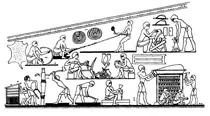
Figure 2-11 Furniture workshop in ancient Egyptian murals
From Egyptian murals and carvings, we can see a lot of descriptions of handicrafts. Figure 2-11 shows the production scene of furniture workshops at that time described in ancient Egyptian murals. The main materials for production were local acacia, fig trees, river willows, etc. At the same time, cedar and juniper were imported from Syria, and ebony was imported from southern countries. The wooden tools at that time included axes, chisels, mallets, saws, knives, etc. Since there were no planes, furniture was polished using polishers made of sandstone. The popular craft at that time was a paneling process, that is, small pieces of wood were combined into large flat plates with wooden nails to make furniture. The thinnest panel was only 6 mm thick. A cabinet unearthed from the tomb of Tutankhamen (BC 1368-1350) was made of about 33,000 small pieces of wood. The structure of furniture had already appeared complex mortise and tenon joints, supplemented by the stretching technology of belt strips and the masking technology of animal skins. At that time, paints had already appeared. At the same time, there was also a painting method that used tempera (a method of painting with egg yolk mixed with paint) on the surface of plaster as decoration, often depicting large-scale scenes of imperial conquests and court life. The most common surface decorations were carvings and inlays. In addition to lion heads and animal feet, the carvings also included images of the sun god, the eagle god, and the hippopotamus god, which reflected the polytheism and social consciousness of the sameness of man and god in Egyptian society.
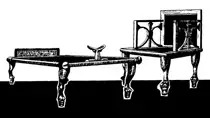
Figure 2-12 Funerary beds and chairs unearthed from the ancient Egyptian pyramids of Giza
The existing furniture from the Old Kingdom of Egypt includes the funerary bed and chair unearthed from the famous Giza Pyramid (Figure 2-12). These furniture were produced around 2686 BC. The shape of the bed is very unique, with the headrest slightly higher. The entire bed is connected with copper parts and can be disassembled when necessary. Almost all Egyptian furniture has animal-shaped legs, and the front and back legs are in the same direction, which is an important difference between ancient Egyptian furniture and later ancient Greek and Roman furniture.
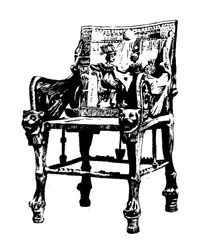
Figure 2-13 Tutankhamun’s Pharaoh’s throne
The most brilliant example of Egyptian furniture is the funerary furniture of Tutankhamun, the young king of the 18th Dynasty. The exquisite craftsmanship of these products, which are about 3,200 years old, is amazing. The most famous one should be the magnificent Pharaoh's throne (Figure 2-13). The gilded relief on the back of the throne shows the life scenes of the tomb owner before his death. The queen is applying holy oil to the king sitting on the throne, and the sun god is shining in the sky. The costumes of the characters are all inlaid with colored pottery and jadeite. The structure is strict and the production technology shows a high degree of precision.
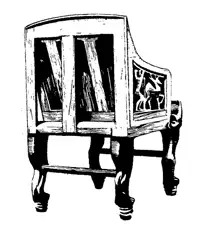
Figure 2-14 Egyptian armchair with diagonal braces
There are many types of furniture in Egypt, including beds, chairs, cabinets, tables, and stools. Many of them are foldable or detachable, which shows that the interior decoration of Egypt was often changed. The lines of early furniture are mostly rigid, including the backrest of the chair, which is upright. Later furniture has a support on the back, which becomes a curved and inclined shape (Figure 2-14), which shows that Egyptian designers began to pay attention to the comfort of furniture. This understanding is of great significance in the history of world furniture development.
Egyptian furniture laid a solid foundation for the development of furniture in later generations. For thousands of years, the basic forms of furniture design have not been able to completely surpass the imagination of ancient Egyptian designers. Whether in terms of quantity or quality, Egyptian furniture can be called the best model of ancient furniture design, and it provides rich materials for future generations to study the history of Egyptian art. Even in today's modern production, we can still get many useful inspirations from the study of Egyptian furniture.
2. Ancient Greek and Roman designs
For more than 2,000 years, the design culture of ancient Greece and Rome has never been interrupted by the changes of history. In fact, it has become the foundation of the long-standing European design, and its influence still exists today. Therefore, Europeans are accustomed to calling the culture of ancient Greece and Rome classical culture.
(1) Ancient Greek design
From the 8th century BC, many small slave states were established in the Balkan Peninsula, the west coast of Asia Minor and the islands of the Aegean Sea. They migrated abroad and established many states in present-day Italy, Sicily and the Black Sea region. The political, economic and cultural relations between them were very close, and they were collectively called ancient Greece.
Ancient Greece is the cradle of European culture. Due to the wisdom of the Greeks and the enlightened social structure of the slave owners, ancient Greece has made brilliant achievements in art, literature, philosophy, and science. Ancient Greece is also a pioneer in European design, especially in architectural art, which has deeply influenced European architectural design for more than 2,000 years. Ancient Greek handicrafts were well developed. The ancient poet Homer's epic once mentioned the craftsmanship of gilding, carving, painting, polishing, inlaying, etc., and listed different types of furniture such as tables, benches, boxes, beds, etc.
The handicrafts that have survived from the ancient Greek period are mainly pottery, among which the red and black painted pottery vases are the most famous. The shapes and craftsmanship of these pottery vases are extremely exquisite. The paintings on the pottery vases mostly reflect the lives and battles of the people at that time, and are mainly figures. These vase paintings have become precious materials for studying ancient Greek art and life. The figures on the vase paintings are very elegantly portrayed, mainly in line drawing, and the characteristics of ancient Egyptian paintings are still retained in the expression method. The faces of the figures are mostly shown in profile. In terms of design, these pottery vases are very functional and have a certain degree of standardization. Most of the vase paintings are painted on a series of standardized bottles, and different shapes have different uses.
There are few examples of early Greek furniture, except stone products. There are only a few examples of furniture from the Classical Period from the 7th to the 5th century BC and the Athenian Period from the 5th to the 4th century BC. Greek furniture of this period basically inherited the style of ancient Egyptian furniture, with straight lines and decorations of lion heads and sphinxes.
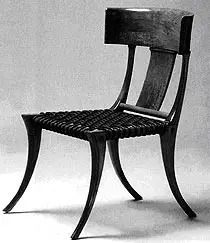
Figure 2-15 Greek Chrismus Chair
The most outstanding representative of Greek furniture is a chair called Klismos (Figure 2-15). The lines of the chair are extremely beautiful, which is very scientific from the perspective of mechanics and excellent from the perspective of comfort. It forms a strong contrast with the rigid lines of early Greek furniture and Egyptian furniture. Wherever there is a piece of furniture influenced by the Greek style, it must be a reproduction of such beautiful lines. The legs of this style of chair are very strong, and it is likely that they were made by heating and bending wood instead of cutting out large pieces of wood. In a hierarchical society, chairs are the most hierarchical furniture. The word "chairman" in English means the person sitting on the chair. The reason why Greek chairs can show such a beautiful and simple form is probably related to their pursuit of freedom in spirit. Greek furniture also has animal leg-shaped decorations, but they abandoned the Egyptian practice of four legs in unison and changed to a style where all four legs are outward or inward.
Although Greek furniture is a continuation of ancient Egyptian furniture, it has made a huge leap in form. No wonder furniture designers in the Renaissance regarded Greek furniture as a model.
Ancient Greece also made brilliant achievements in architectural art. Some of its building types, stone beam and column components and specific artistic forms of combination, and some artistic principles of building and building complex design have had a profound impact on later generations. The main achievement of ancient Greek architecture is the perfect artistic form of monumental buildings and building complexes, among which the most representative works are the Acropolis of Athens and its central building, the Parthenon.
The Parthenon was built between 447 and 438 BC and is the temple of Athena, the patron saint of Athens. Since most ancient Greek temples were peristyle, the treatment of columns and related components basically determined the appearance of the temple. For a long time, the Greek architectural art style was mainly reflected in the form, proportion and mutual combination of columns, architrave and eaves, thus forming a fairly stable and stylized practice, which was called "column style". The Parthenon represents the highest achievement of the ancient Greek Doric column style. It is well-proportioned, strong and vigorous without any clumsiness. The capital is a straight and simple inverted cone, the grooves of the column body intersect to form sharp edges and corners, there is no column base, and it has a masculine beauty.
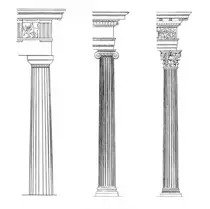
Figure 2-16 Comparison of three column styles in ancient Greek architecture
Another major column style in ancient Greece is the Ionic. This column style is more beautiful, gorgeous and light, with delicate and soft scrolls on the capital, a small round surface on the column edge, and a complex and elastic column base, which has the characteristics of a light and beautiful female figure. The Erechtheion Temple in Athens is a typical Greek Ionic column temple, which was built between 421 and 405 BC. In addition to the Doric and Ionic column styles, there is also a Corinthian column style, with curling grass on the capital (Figure 2-16).
Figure 2-16 Comparison of three column styles in ancient Greek architecture
Ancient Greek columns are not only widely used in various buildings, but also used as a symbol of classical culture by later generations, and are used in furniture, interior decoration, and daily products. Some machines in the early days of the Industrial Revolution even had columns built according to the Greek columns. Therefore, understanding the "column" structure is very necessary for studying the history of industrial design.
(2) Ancient Roman Design
Ancient Roman design directly inherited the achievements of ancient Greek design and carried it forward. The first reason for the prosperity of ancient Roman design is that it unified the most advanced and rich areas along the Mediterranean coast. The cultural exchange and integration after unification promoted a new upsurge. The second reason is that from the 2nd century BC to the 2nd century AD was the heyday of the ancient Roman slavery system. The productivity reached the highest level in the ancient world, the economy was developed, and the technology was unprecedentedly advanced. Relying on its strong productivity, ancient Rome created brilliant design achievements.
Most of the pottery in ancient Greece was wheel-made. In the Roman era, as the bronze mold technology became more and more mature, the mold-making method began to be used to mass-produce high-quality imitation metal pottery. These pottery were produced in different production centers and exported to a wide range of regions. Since each piece of pottery was made by mold-making instead of being drawn on a turntable, it was guaranteed that the product had exactly the same characteristics. This production method has reflected the characteristics of industrialized production, separating the design and production of the product, and the emergence of specialized designers, such as the bronze tripod from the Roman period unearthed in Figure 2-17 Pompeii, which greatly promoted the development of design. The design of ancient Roman mold-making pottery contrasts with the romantic idea of hand-made household products that emphasizes the personality of the designer/maker. The former is obviously closer to the concept of industrial design today.
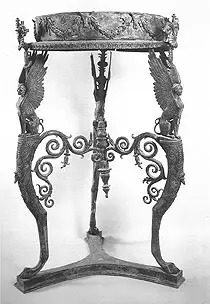
Figure 2-17 Three-legged tripod and stool
The basic shape and structure of ancient Roman furniture show that it developed directly from ancient Greek furniture, but it also has some unique characteristics of its own, the most prominent of which should be the emergence of a large number of bronze furniture. The ancient Romans liked magnificent scenes, so the architecture of ancient Rome was more magnificent than that of ancient Greece, such as the huge Colosseum and the Pantheon. This hobby is also reflected in the design of furniture, among which the bronze furniture excavated from the ruins of Pompeii is the most outstanding representative. From the perspective of form, they are basically not separated from the influence of ancient Greek furniture, especially the tripod and stool still maintain a clear ancient Greek style (Figure 2-17), but the decorative patterns show a potential sense of majesty. The casting technology of ancient Roman furniture has reached an amazing level. The back of the curved leg part of many furniture is cast hollow, which not only reduces the weight of the furniture, but also has higher strength.
In the 4th and 5th centuries AD, the Roman Empire gradually declined. The invasion of barbaric peoples in the northeast brought unprecedented catastrophe to Roman culture. In 476 AD, the last emperor of the Western Roman Empire was overthrown, which led to the long and dark feudal era in European history. The design style also changed dramatically.
3. European medieval design
Until the emergence of the capitalist system in the 14th and 15th centuries, the feudal period in Europe was called the Middle Ages. During this period, natural economic agriculture dominated, farmers were self-sufficient, and the scope of production was very narrow. On this economic basis, Europe was torn apart, and the glorious culture and outstanding technological achievements of ancient Rome were forgotten.
Figure 2-18 Medieval folding chair The main ideology and superstructure of the European feudal system is concentrated in Christianity, which preaches that secular life is sinful and human desire is the root of all evil, and consciously denigrates the classical culture containing realism and scientific rationality. The church not only dominates people's spiritual life, but also controls all aspects of people's lives. The feudal state of division and the rule of the church have had a profound impact on the development of design in the Middle Ages in Europe.
Representatives of the Arts and Crafts Movement in 19th century Britain opposed machinery and large-scale industrial production, and always claimed to have found their ideals in the Middle Ages. They firmly believed that the only way to establish an acceptable design standard was to return to the respect for quality of medieval handicraft products and return to medieval forms. Therefore, it is very interesting to examine the design of the European Middle Ages.

Figure 2-18 A medieval folding chair
After the Germans conquered Rome, most of the excellent heritage of Roman culture had been burned in the war, so the handicrafts of the early Middle Ages could not be compared with the products of classical culture, and the design clearly had the rough form of northern barbarians. In addition, because the church preached abstinence and advocated a Puritan lifestyle, the production of various daily necessities was very simple and even crude. Many furniture at that time were made of rough wooden boards, and the furniture used by the nobles was no exception. On the other hand, since there was no need to work hard on complicated decorative details, medieval manufacturers were generally good at structural logic, economy and creativity, which were exactly what the Bauhaus furniture designers later pursued. The medieval folding chair shown in Figure 2-18 looks like an exhibit in a modern Dutch furniture exhibition.
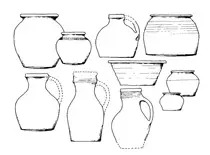
Figure 2-19 Standard series of forms in medieval English pottery
There was also a high degree of standardization in medieval handicraft production. Many imperial units of measurement were fixed during this period, and from the early 12th century, the foot was used as it is today. This naturally affected the shape and proportion of buildings and the size of many standard household items. Medieval handicrafts were organized to a certain extent, and guilds were generally established according to different industries, and design standards were established within the guilds. In the UK, the pottery industry has developed a standard series of shapes (Figure 2-19), and the same shape has different size series. All pottery products are marked to show that the producer is responsible for its quality.

Figure 2-20 Iron candlestick from the 18th century
There are not many handicrafts left from the Middle Ages, but the medieval attitude towards design still appears in the handicraft workshops of the 17th and 18th centuries. When people see a complete set of candlesticks (Figure 2-20) today, they often mistake it for a typical handicraft, because the rush candles have long been replaced by electric lights. But if you look closely, you will find that the design of these candlesticks is very practical. They can support a wick immersed in candle wax in a safe and stable form. Even if a modern designer encounters the same problem, it is difficult to find a better basic design solution.
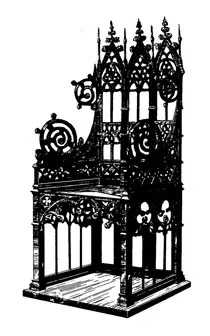
Figure 2-21 Gothic furniture
The highest achievement of medieval design is the Gothic church. In the second half of the 13th century, the Gothic architectural style centered in France became popular in the European continent. Gothic, also known as the tall and straight style, is characterized by its vertical upward momentum. Gothic architecture replaced the Roman arch with a pointed arch, and the wide windows were decorated with stained glass religious paintings, and clusters of columns, reliefs and other richly layered decorations were widely used. This kind of architecture meets the requirements of the church. The towering spires lead people's eyes to the ethereal sky, making people forget reality and fantasize about the afterlife. Notre Dame de Paris in France and Cologne Cathedral in Germany are both outstanding representatives of Gothic architectural design.
The Gothic style has a significant impact on handicrafts, especially furniture design. Gothic furniture deliberately pursues the mysterious effect of Gothic architecture. The most common technique is to decorate furniture with images of pointed arches and tall spires, and deliberately emphasize vertical upward lines (Figure 2-21).
设计与生产过程相分离是工业设计的显著特点。随着中世纪后期以手工生产为基础的早期资本主义的出现,设计的专业化不断得到加强。中世纪商业的增长是向专业化演进的重要阶段,在欧洲发达的都市,如佛罗伦萨、威尼斯、纽伦堡等地,大型工场发展起来,以满足宫廷、教堂和富有的商人对于高档产品的需要。虽然传统的技巧和手艺仍是主要的,但它们已更加专业化。 这些城市手工艺人所生产的不少作品都具有很高的水平,艺术家与手工艺人之间的界限已经很模糊,他们的差别仅在于发展的程度不同,而其训练和技艺的基础是相同的。这些都为即将来临的文艺复兴运动打下了基础。
4. Post-Renaissance Design
The buds of European capitalism began to appear in Italy in the 14th century and spread everywhere after the 15th century. Due to the social division of labor, the innovation of production technology was promoted, commodity production and commerce became increasingly prosperous, and the emerging bourgeoisie in the city demanded to launch a struggle against the spiritual rule of the church in the field of ideology. Therefore, the "Renaissance Movement" centered on Italy was formed to create public opinion for the establishment of capitalism. The central idea of the Renaissance is the so-called "humanism". It advocates that literature and art express people's thoughts and feelings, science seeks welfare for life, and advocates individual freedom to oppose the religious shackles of the Middle Ages. The Renaissance promoted the general cultural upsurge, and design also entered a new stage with brilliant stars and flourishing flowers, and had a far-reaching impact.
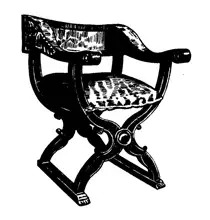
Figure 2-22 Italian Renaissance chair style
The Renaissance era was in contrast to the rigid design style of the Middle Ages. It pursued humanistic curves and beautiful layers, and turned its attention back to ancient art, trying to draw nourishment from the classical art of ancient Greece and Rome. The main techniques and structures of early Renaissance furniture were still based on the style of the middle century, but showed greater freedom, and curves were widely used. The ups and downs of the furniture were more obvious, showing a kind of feeling that made people close (Figure 2-22). Science and technology also developed greatly during the Renaissance, and the design of various engineering and technical machinery was quite developed. Technicians worked hard to study transportation methods, military machinery and hydraulic tools, etc., in order to improve production efficiency. The Renaissance master Leonardo da Vinci (1452-1519) even designed an aircraft and drew a schematic diagram of its structure, but it was not built due to limited conditions. Due to the need to build huge buildings, construction machinery for various purposes appeared, and they were very ingeniously designed. In his notebook in 1465, architect Gioliano da Sangallo (1445-1516) drew 12 kinds of lifting machines for construction, all of which used complex gears, racks, screws and levers. In 1488, Milanese Agostino Ramelli published a book in Paris titled On Various Ingenious Machines, which listed various machines designed at that time.
The continuous development of commerce and trade has led to the expansion of production units in scale, and at the same time brought about competitive pressure, which has led to the demand for innovation to make products more distinctive and more attractive to consumers, which has stimulated the demand for design. In the early 16th century, emerging designers first in Italy and Germany began to use pattern books to meet this demand. These books were published and distributed in large quantities using new machine printing methods. The illustrations in the books include decorative methods, patterns, and patterns, which are usually used by the dyeing and furniture industries. The decorative designs in pattern books can be repeatedly applied to different occasions. Their importance in the history of industrial design lies in the fact that through the form of publication, designers are separated from the application of their designs.
By the 17th century, the Renaissance had declined, and European design entered a new historical period, known as the Romantic Period. The design styles of the Romantic Period were mainly Baroque and Rococo, and the popularity of these two styles varied in time and place.
At the turn of the 16th and 17th centuries, the Baroque design style began to become popular, and its main popular area was Italy. The original meaning of Baroque was a deformed pearl, specifically referring to the unevenness of the surface of jewelry. Later, it was used as a synonym for a design style. This style was contrary to the solemnity, implicitness, and balance of Renaissance art, and pursued luxurious, exaggerated, and artificial surface effects. It broke through the conventions of classical art. This design style is concentrated in Catholic churches and has influenced furniture and interior design.
Baroque design deliberately pursues unusual and unconventional forms. Its architectural design often uses broken pediments or overlapping pediments, intentionally making some parts of the building incomplete; in terms of composition, the rhythm jumps irregularly, and it likes to use double columns, or even three columns as a group, and the bays vary greatly. In terms of decoration, Baroque design likes to use a large number of murals and sculptures, which are brilliant, colorful, magnificent, full of vitality and dynamics. The postmodern design trend popular in the contemporary West often imitates the Baroque design style.
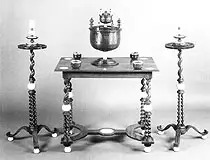
Figure 2-23 Baroque style furniture
The most important feature of early Baroque furniture is the use of twisted legs instead of square or turned wood legs. This form breaks the sense of stability of furniture in history, giving people the illusion that all parts of the furniture are in motion (Figure 2-23). This sense of movement with an exaggerated effect is in line with the tastes of court nobles, so it quickly became a popular trend. Later, grand spiral decorations appeared on Baroque furniture, which was stronger than twisted column legs, showing a kind of enthusiasm and unrestrained passion in movement. In addition, Baroque furniture emphasizes the integrity and fluidity of the furniture itself, pursues a large harmonious rhythmic effect, and is also more comfortable. However, the ostentatious and irrational characteristics of Baroque have always been criticized.
In the 17th century, as the center of European trade shifted from the Mediterranean region to the Atlantic coast, the power of the country was concentrated in the monarchical government, which was concentrated in the Louis XIV dynasty. In order to express the absolute monarchy, classicism was formed based on the architecture of the ancient Roman Empire, and its typical representative was the Palace of Versailles. The characteristics of the classicism style are simplicity, harmony, rationality and monumentality, which is in sharp contrast to the chaos and accumulation of the Italian Baroque style of the same period. However, just as the Baroque style appeared after the Italian Renaissance, the Rococo style appeared in France after classicism with the decline of monarchy.
Rococo originally means rocks and shells, and specifically refers to an artistic style that was popular in the Louis XV era of France in the 18th century, mainly reflected in the design fields of architectural interior decoration and furniture. Its basic characteristics are the modeling of slender and light female bodies, gorgeous and complicated decorations, and intentional emphasis on asymmetry in composition. The decorative themes tend to be naturalistic, and the most popular ones are the ever-changing, unrolling and entangled grass leaves, as well as clam shells, roses and palms. The colors of the Rococo style are very delicate, such as tender green, pink, scarlet, etc., and the lines are mostly gold.

Figure 2-24 French Rococo furniture in the 18th century
From the development root, Rococo style is the continuation of Baroque style, and it is also the result of serious influence of Qing design style. Therefore, in France, Rococo is also called decoration. Louis XV was a famous tyrant in French history. He indulged in the extravagant life in the Palace of Versailles, and everything was controlled by the concubines in the palace. Therefore, the furniture styles of this era were transferred with the hobbies of the ladies in the palace. In Rococo furniture, the thick and twisted legs of the 17th century disappeared, replaced by slender and curved pointed legs (Figure 2-24). Rococo furniture mostly uses flat shell inlays and gilding, which are completely learned from. The paint of furniture in this period became an important craft technique. One is the black paint with gilded patterns, and the other is the pure white or light-colored base with gilded patterns. Both are equally luxurious and elegant.
Due to the excessive decoration in the Baroque and Rococo styles, they gradually fell into the quagmire of pretentiousness. By the time of Louis XV, this decorative concept of pursuing perfect form had reached its peak and it was impossible to have any new styles. After that, the design styles of Europe and America had to repeat the old tunes of past designs, thus entering a chaotic transition period from historical styles to modern industrial design.
| < Previous |
|---|